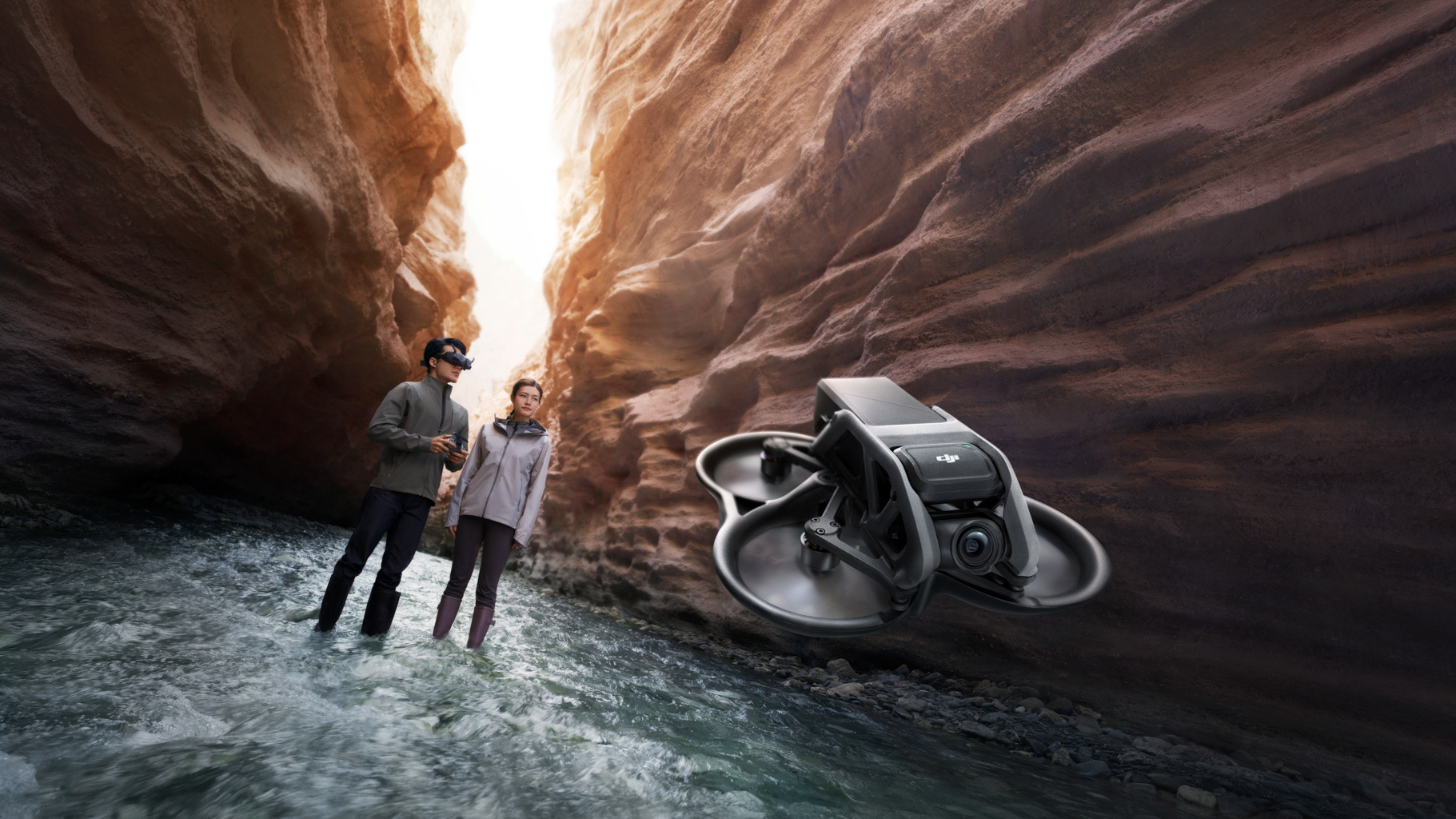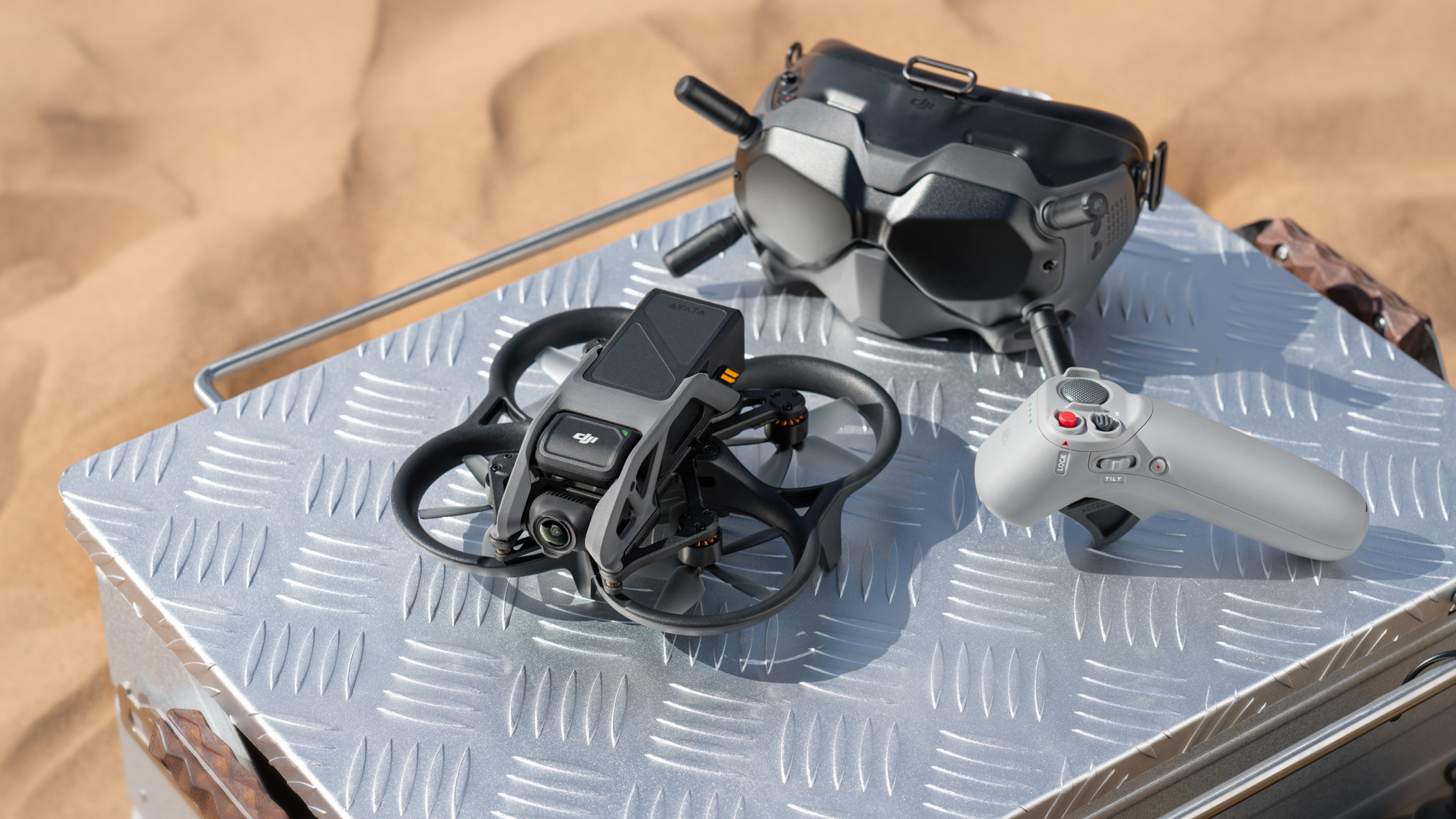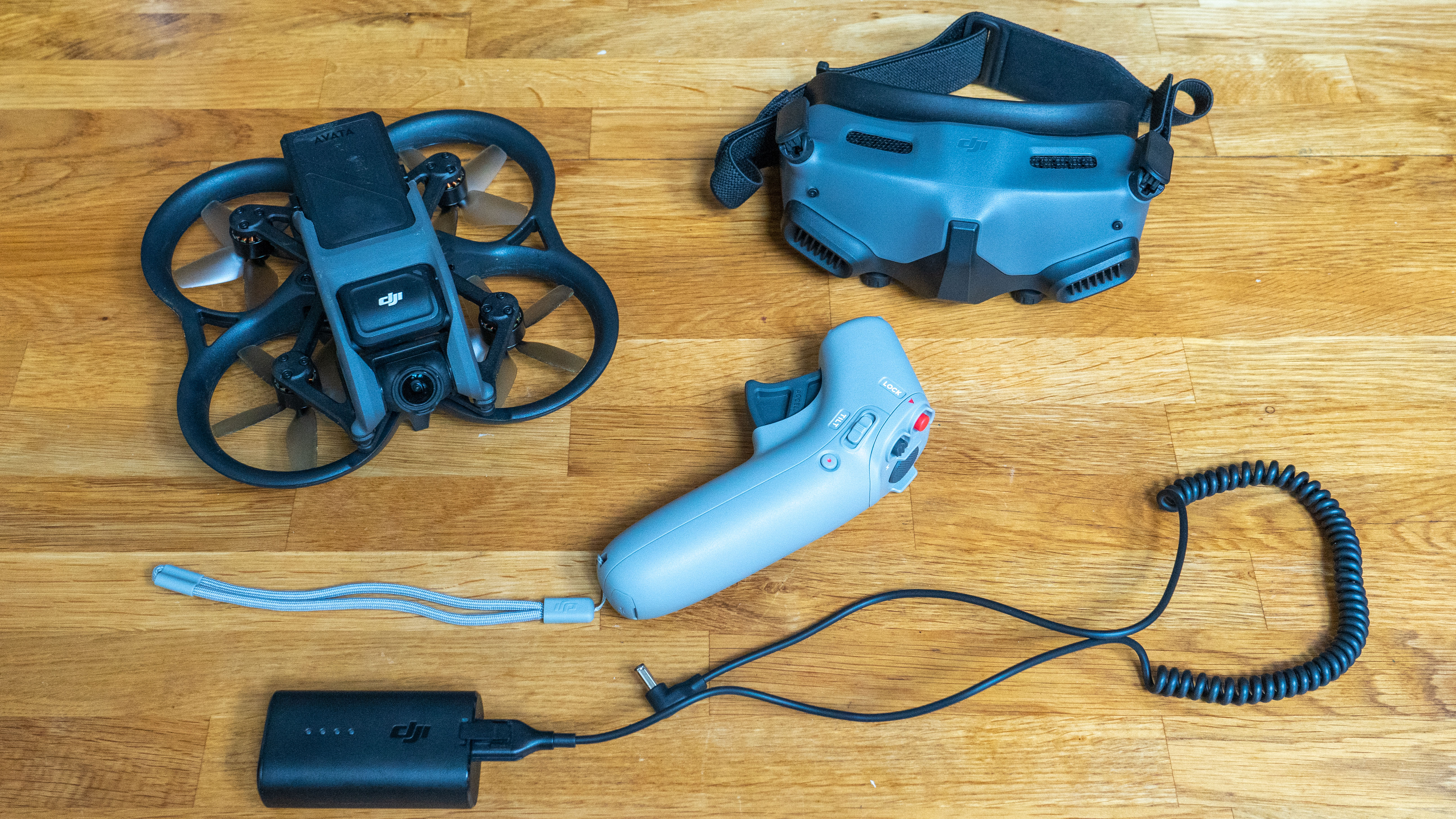DJI announces its new Avata FPV drone and it is a Cinewhoop!
Rumors began in December when a leaked roadmap teased a ‘FPV Mini,’ but now we know every detail, including the price!

The DJI Avata, launching on the 25 August 2022, is the company’s second ready-to-fly FPV (First Person View) drone in under two years. The new drone launches alongside new goggles, the DJI Goggles 2 (which aren’t the same thing as the DJI FPV Goggles V2).
Specs are impressive, with the DJI Avata boasting a 4K 60fps camera stabilized by a single-axis gimbal and EIS (just like the DJI FPV). The drone uses digital live view, so the goggles display high def video at up to 120MHz (depending on goggle choice) from a 50Mbps feed.
There is up to 18-minutes of flight time from a single battery. The underside features ToF and vision sensors for accurate altitude and automated return-to-home. Positioning comes from GPS, Galileo and BeiDou and some of the battery time will be devoted to the return journey which kicks in automatically.
At 180mm square and 80mm tall the drone might not be an ‘FPV Mini,’ but it very much fits within the category the drone community calls “Cinewhoop”. Indeed this drone should offer creatives and fun seekers who want to fly through tight spots an all new outlet for cinematography.
Cinewhoop drones: What are they, and why the weird name?
The camera offers a field of view of 155˚ (an EFL of 12.7mm) from a 1/1.7-inch 48 megapixel sensor with fixed focus from 60cm (2ft) onward. Manual settings are on offer, with ISO from 100 to 25,600. Video is recorded at 150Mbps and D-Cinelike is an option for colorists. DJI RockSteady EIS (as well as dampeners) to eliminate picture shake, and HorizonSteady to keep the picture level. The drone also records metadata for subsequent correction if desired. Recording can also be switched to 2.7K at up to 120fps), and up to 20GB can be recorded onto the drone’s built-in memory though there is also a MicroSD slot.
The ducted frame design protects the 5-blade propellors from impact (and anyone from an impact), making for an inherently safe design. This contrasts with the DJI FPV which had forward collision sensors which could be disabled in the menu.
Get the Digital Camera World Newsletter
The best camera deals, reviews, product advice, and unmissable photography news, direct to your inbox!
Quoted vision transmission range is 10km (FCC) or 2km (CE) – a difference imposed by radio power regulations. Safety features include geofencing and ADS-B, but DJI remind users that they should fly with a spotter to keep goggle-free eyes on the sky for them.

The new DJI Goggles 2 are lighter than the FPV Goggles V2 at 290g, based around MicroOLED. They can be worn with only a horizontal headband, and have adjustable diopters (so glasses can be taken off) and interpupillary distance. They have a resolution of 1920x1080 and a touchpad controller on the right. Video can be recorded to (or played back from) a MicroSD card slot built in.
Although it isn’t a new product, it is interesting that both DJI’s bundles include the DJI Motion Controller rather than the stick-based DJI FPV Controller. This emphasis on ease of use comes from DJI’s creative director Ferdinand Wolf, who says “DJI Avata was built to awaken a desire to fly in everyone, with immersive flight technology that allows anyone to explore the almost out-of-body experience of FPV flight.”
The drone and equipment are supplied essentially ready to go, simply needing a long button press the first time to bind. This is in contrast to the enthusiast FPV community which can require a lot of knowledge to be assembled by prospective pilots. DJI’s flight modes are Normal, Sport and – with the stick-controller only – Manual. They’re able to take advantage of built-in sensors to behave more predictably, though only Manual releases the full 27m/s (60mph) max speed.

The drone can be purchased immediately for $629, £499 or AU$799 and will bind with the older DJI FPV Goggles V2 and either of the controllers introduced with the DJI FPV in March 2021. If you want or need goggles the drone is available in one of two bundles:
• DJI Avata Pro-View Combo, including drone, DJI Motion Controller and (the new) DJI Goggles 2. This costs $1,388, £1,229 or AU$1,989.
• DJI Avata Fly Smart Combo, including drone, DJI Motion Controller and (the older) DJI FPV Goggles V2 - retailing for $1,168, £989 or AU$1,629.
As with their other drones, a Fly More kit is available, featuring a charging hub and two additional batteries for $279, £215 or AU$339. Unlike other Fly More kits there isn’t a case. DJI have also made a selection of accessories and parts available – both the upper frame and propellor guard are replaceable, and ND filters are on offer.
Best accessories for your drone
The best drones for beginners
Best drones for kids
The best DJI drones
The best indoor drones
The best underwater drone
Best drones for fishing
12 things you need to make money from a drone
The best camera insurance for photographers
The best camera backpacks

With over 20 years of expertise as a tech journalist, Adam brings a wealth of knowledge across a vast number of product categories, including timelapse cameras, home security cameras, NVR cameras, photography books, webcams, 3D printers and 3D scanners, borescopes, radar detectors… and, above all, drones.
Adam is our resident expert on all aspects of camera drones and drone photography, from buying guides on the best choices for aerial photographers of all ability levels to the latest rules and regulations on piloting drones.
He is the author of a number of books including The Complete Guide to Drones, The Smart Smart Home Handbook, 101 Tips for DSLR Video and The Drone Pilot's Handbook.
